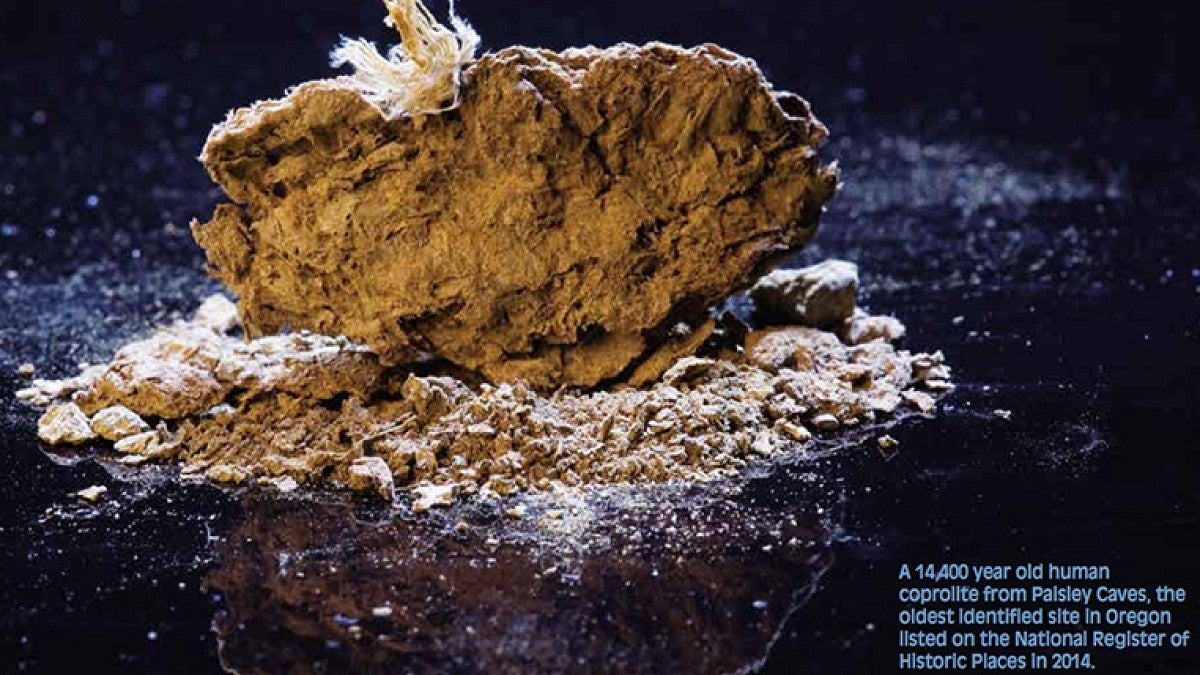Artifacts, including dried human excrement dating to 14,400 years ago, found in Oregon's Paisley Caves have helped rewrite what is known about early North American settlement. Now the site, near Paisley in Lake County, is listed on the National Register of Historic Places
"Archaeologists have worked at the site since 1938,” said University of Oregon archaeologist Dennis Jenkins of the Museum of Natural and Cultural History. “As we have used increasingly sophisticated scientific techniques in recent years, our understanding of the cultural and megafaunal remains at the site has grown dramatically.”
In 2008, Jenkins' team documented the discovery of coprolites, or dried human feces, that contained DNA. More coprolites have since been found and tested at multiple independent laboratories to confirm the presence of human DNA. Also discovered – and detailed in Science in 2012 – was the discovery of Western Stemmed points, suggesting the presence of a human culture other than Clovis had arrived on the continent.
The Paisley Five Mile Point Caves are on land owned by the federal Bureau of Land Management (BLM). The site, now consisting of sagebrush steppe vegetation, once was a region of grassy plains surrounding a lake, marsh and river.
“Our public lands serve many public needs,” said Stan McDonald, BLM’s archaeologist for Oregon, in a news release issued by the Oregon State Historic Preservation Office that announced the designation. “As the steward of these lands, the BLM is proud to be the caretaker of this site that captures more than a dozen millennia of human activity in a single place in Oregon.”
The National Register is maintained by the National Park Service under the authority of the National Historic Preservation Act of 1966.
—by Jim Barlow, Public Affairs Communications


